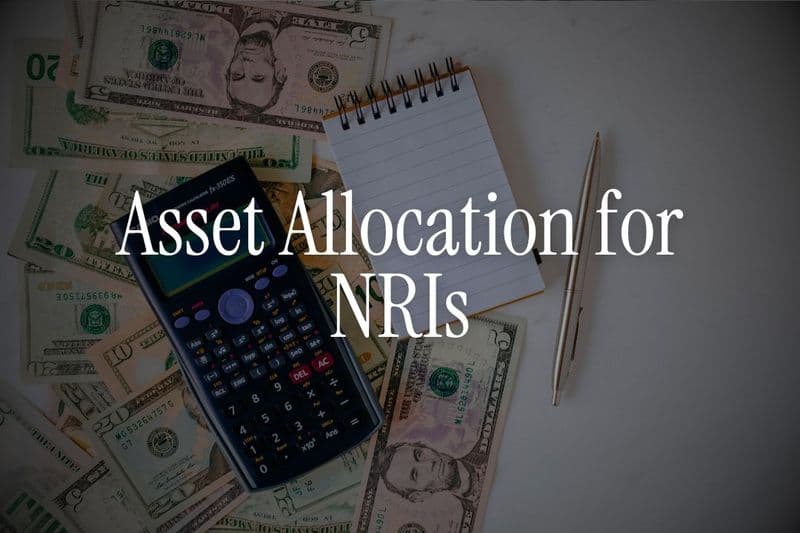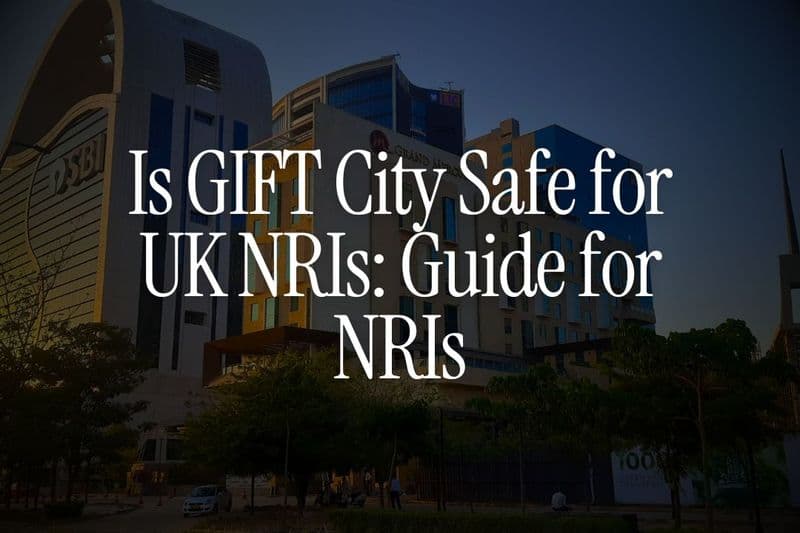
"Should I put 50% in India and 50% in the UAE? My friend says 30-70, but my banker suggests something else entirely."
This exact question landed in our WhatsApp community just yesterday from an NRI in Dubai.
After helping hundreds of NRIs through our platform structure their cross-border portfolios, we know the confusion is real. Asset allocation as an NRI isn't about copying someone else's formula – it's about understanding your unique situation across currencies, time zones, and life goals.
This guide covers everything you're really thinking about: geographic balance, currency risk, tax implications, age-based strategies, and the costly mistakes that keep us up at night reviewing portfolios.
The Geographic Balance Dilemma: India vs Your Host Country
Here's what we tell every NRI who asks about the "perfect" split: As an NRI, you can invest at least 5 to 10% of your income in India, but how much you invest will depend on factors like planning to move back to India or staying in your country of residence.
If you're planning to return to India: To retire in India eventually, you'll need to boost your investment in Indian assets progressively, with asset allocation dynamically adjusted when close to retirement. Initially focus on high-return equities, and when closer to retirement, prioritize capital protection and steady income.
If you're staying abroad: If you're planning to retire abroad, investing in Indian markets is a smart move for diversifying your investments across borders. Keep 20-40% in Indian assets for diversification and growth exposure.
The reality? UK NRIs and Gulf NRIs can allocate a higher portion about 20 to 30% and 40 to 50% respectively, with suggested allocations varying based on the country of residence.
👉 Tip: Use our Residential Status Calculator to understand how your return timeline affects these allocation decisions.
Why NRI Asset Allocation Rules are Completely Different
Unlike resident Indians, you're managing wealth across two economies with different growth cycles, tax structures, and currencies. The biggest challenges we see in our community discussions:
Currency Concentration Risk: Many NRIs forget this. They see "Fund gave 15% return" and assume they made 15% in their home currency. They didn't. The rupee depreciated 10% over 3 years, eating half your returns.
Tax Complications: Tax implications on capital gains, tax deducted at source (TDS) is a complicated process. NRIs often make the mistake of neglecting taxes.
Repatriation Rules: Moving money isn't always straightforward across borders and regulations.
Distance and Oversight: Managing investments remotely requires different strategies than hands-on approaches.
Age-Based Allocation: Your Investment Timeline Matters
Your investment timeline dramatically impacts allocation strategy. Here's what works based on our client experience:
10+ Years to Return:
- 70-80% growth assets (equity mutual funds, growth stocks)
- 20-30% stable assets (debt funds, GIFT City FDs)
5-10 Years to Return:
- 60-70% growth assets
- 30-40% stable assets
<5 Years to Return: Gradually shift from high-risk to low-risk assets as your return nears, tailoring your investment strategy to your goals whether seeking regular income or long-term wealth appreciation.
👉 Tip: The timing of your return - be it in 10 or 5 years - significantly influences your asset allocation. Balancing risk and diversification is crucial.
Currency Risk Management: The Hidden Portfolio Killer
This trips up most NRIs. You can't eliminate currency risk, but you can manage it: Accept it as part of investing in India.
Over decades, rupee depreciation is offset by higher Indian GDP growth and mutual fund returns. Diversify across currencies.
Don't put 100% of your wealth in INR-denominated assets. Hedge with GIFT City investments.
Practical Hedging Strategies:
- Keep 30-40% assets in your earning currency (USD/AED/GBP)
- Use GIFT City investments for INR exposure without currency risk
- Track exchange rates with our Rupee vs Dollar tracker
Real Example: During 2013's rupee crisis, diversified NRIs lost 5-8% while INR-concentrated portfolios dropped 15-20%.
Available Asset Classes: Building Your NRI Portfolio
Indian Assets You Can Access:
- Equity Mutual Funds: A balanced approach works best: 60-70% Indian equity funds, 10-20% international funds, and 10-30% debt funds, adjusted based on your age, risk tolerance, and specific goals.
- Fixed Deposits: Through NRE/NRO accounts or GIFT City USD deposits
- Real Estate: For those planning to return, but evaluate thoroughly
- Gold: Financial advisors suggest allocating 5%-10% of your portfolio to gold holdings through Gold ETFs and Gold Mutual Funds.
Host Country Assets:
- Local equity and bond markets
- Emergency funds in local currency
- Real estate (if staying long-term)
👉 Tip: Compare all options using our NRI FD comparison tool before making allocation decisions.
Tax-Efficient Asset Allocation Strategies
Paid double tax for two years. Could have saved thousands. This mistake from our community highlights why tax planning must drive allocation decisions:
NRE Account Strategy:
- Tax-free interest on fixed deposits
- Fully repatriable investments
- Ideal for foreign-sourced funds
GIFT City Advantage:
- Tax-free returns for NRIs
- USD-denominated, eliminating currency risk
- Professional fund management options
Check DTAA benefits with your country to optimize tax treatment across all asset classes.
The Five Costliest Asset Allocation Mistakes
1. Real Estate Over-Concentration: NRIs typically invest in real estate for asset building, emotional reasons, or for living in India in the future. But many of them do not evaluate the factors involved thoroughly.
2. No Emergency Fund Strategy: Had to liquidate investments during a family emergency. Poor timing.
3. Following Generic Advice: NRI investing is different. Generic advice doesn't work.
4. Ignoring Portfolio Reviews: Many NRIs set up SIPs when feeling optimistic, then forget about them for years with no reviews, no rebalancing, and no updates.
5. Currency Concentration: I kept everything in dollars initially. Big mistake when we moved back.
Implementation: Building Your Strategic Asset Allocation
- Define Your Timeline: When are you returning to India (or are you)?
- Assess Risk Tolerance: How much volatility can you handle?
- Open Strategic Accounts: Set up NRE/NRO accounts and GIFT City access
- Start Small: Test systems before committing large amounts
- Regular Reviews: Annual rebalancing based on life changes
👉 Tip: Start building your allocation today with our GIFT City investment platform for tax-efficient, currency-hedged exposure to Indian returns.
Your Next Steps
Asset allocation for NRIs requires balancing growth, safety, currency risk, and tax efficiency across multiple jurisdictions. The right allocation helps you build wealth that works regardless of where life takes you next.
Ready to build your optimized allocation strategy? Download our app to access GIFT City investments, portfolio tracking tools, and expert guidance. Join our WhatsApp community to discuss allocation strategies with other NRIs who understand your unique challenges.
Sources




